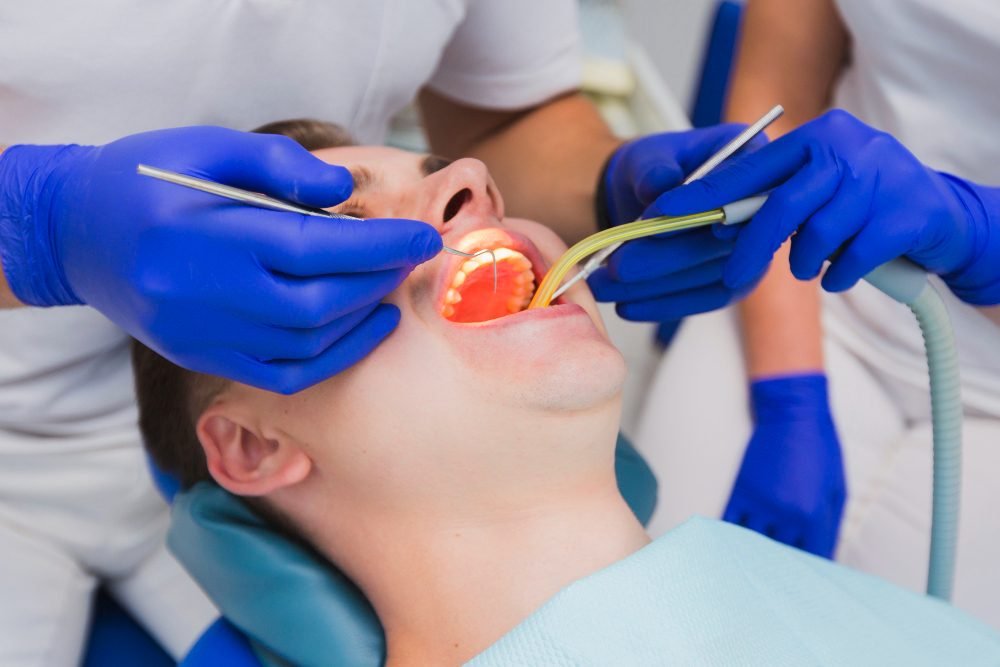Having a tooth pulled can feel like saying goodbye to an unwanted houseguest—necessary but still a bit uncomfortable. Whether you’ve had a wisdom tooth pulled or needed an extraction due to decay, the fallout requires proper care and attention. Your mouth is incredibly durable, but it needs your help to heal quickly. In this thorough guide, we’ll walk through everything you need to know about tooth extraction recovery, from the moment you leave the dentist’s chair to when you can finally enjoy your favorite crunchy foods again. Let’s explore how you can make your healing as smooth and easy as possible.
The First 24 Hours: Critical Care Period
The best hours of healing begin shortly after your procedure. These first 24 hours are crucial for establishing proper healing and stopping problems.
- Rest is non-negotiable during this time. Your body diverts energy to healing when you’re relaxed, so take the day off and limit physical activity. Position your head slightly raised when sitting down—think two pillows instead of one—to reduce bleeding and swelling.
- Apply ice to the outside of your face in 15-minute intervals for the first few hours. This helps reduce swelling, which usually peaks around 48-72 hours after the treatment.
- Avoid rinsing, spitting, or using straws during this time. The pressure caused by these movements can remove the important blood clot, leading to a painful condition called dry socket. When you need to clear your mouth, let the fluids drip naturally rather than spitting violently.
Managing Pain and Discomfort Effectively
Pain control starts before the drug wears off. Take authorized or recommended pain medications according to your dentist’s instructions—typically after the local anesthesia has worn off completely. This strategic method helps you stay ahead of pain rather than chasing it after it intensifies.
Oral Hygiene After Extraction
Maintaining mouth health becomes a balancing act after an extraction. You need to keep your mouth clean without upsetting the healing spot.
- For the first 24 hours, don’t brush close to the extraction site altogether. You can gently brush other areas of your mouth, being careful not to rinse or spit too vigorously.
- After 24 hours, start gentle saltwater rinses (1/2 teaspoon of salt in 8 ounces of warm water) 4-5 times a day, especially after meals. Let the solution gently run out of your mouth rather than spitting.
- Resume normal brushing gradually, but continue to be gentle around the area where the tooth was extracted. A soft-bristled toothbrush is important during this time.
- Avoid mouthwashes containing alcohol as they can hurt the growing tissue and cause pain. If your doctor suggested a special rinse, use it exactly as advised.
Common Complications to Watch For
Being aware of possible issues can help you address problems before they become serious.
- When the protective blood clot is broken or removed before it has had time to heal fully, it can result in a dry socket. The resulting exposed bone and nerve ends cause intense pain that usually begins 3-5 days after extraction. This needs quick dental care.
- Infection signs include fever, chronic or worsening pain, a bad taste or smell, excessive swelling, or the release of pus. Antibiotics may be needed if illness develops.
- Prolonged numbness beyond the expected length of local anaesthetic (usually 2-8 hours based on the type used) may indicate nerve discomfort. While often brief, report this to your doctor.
- Excessive bleeding that continues beyond 24 hours or that you cannot control with gentle pressure from a cloth pad warrants a call to your hopkins dentist provider.
Conclusion
Recovering from a tooth extraction is a journey—sometimes with a few bumps along the way—but with proper care and attention, most people heal without problems. By following these guidelines for the first few critical days and being patient with your body’s natural healing process, you’ll be back to laughing, talking, and eating easily before you know it. Remember that your dentist is your partner in this healing journey, so don’t hesitate to reach out. With the right method, your mouth will heal quickly, leaving the extraction as just a memory.

